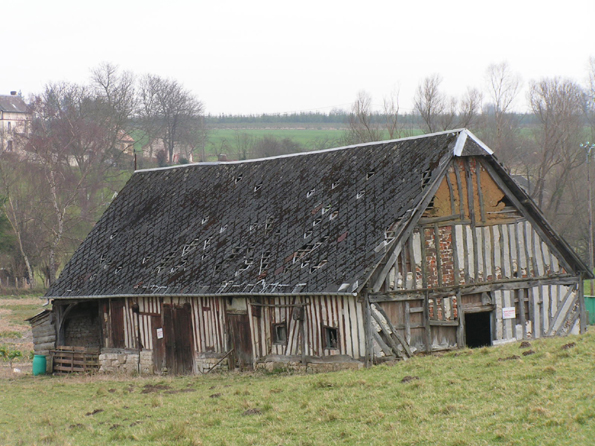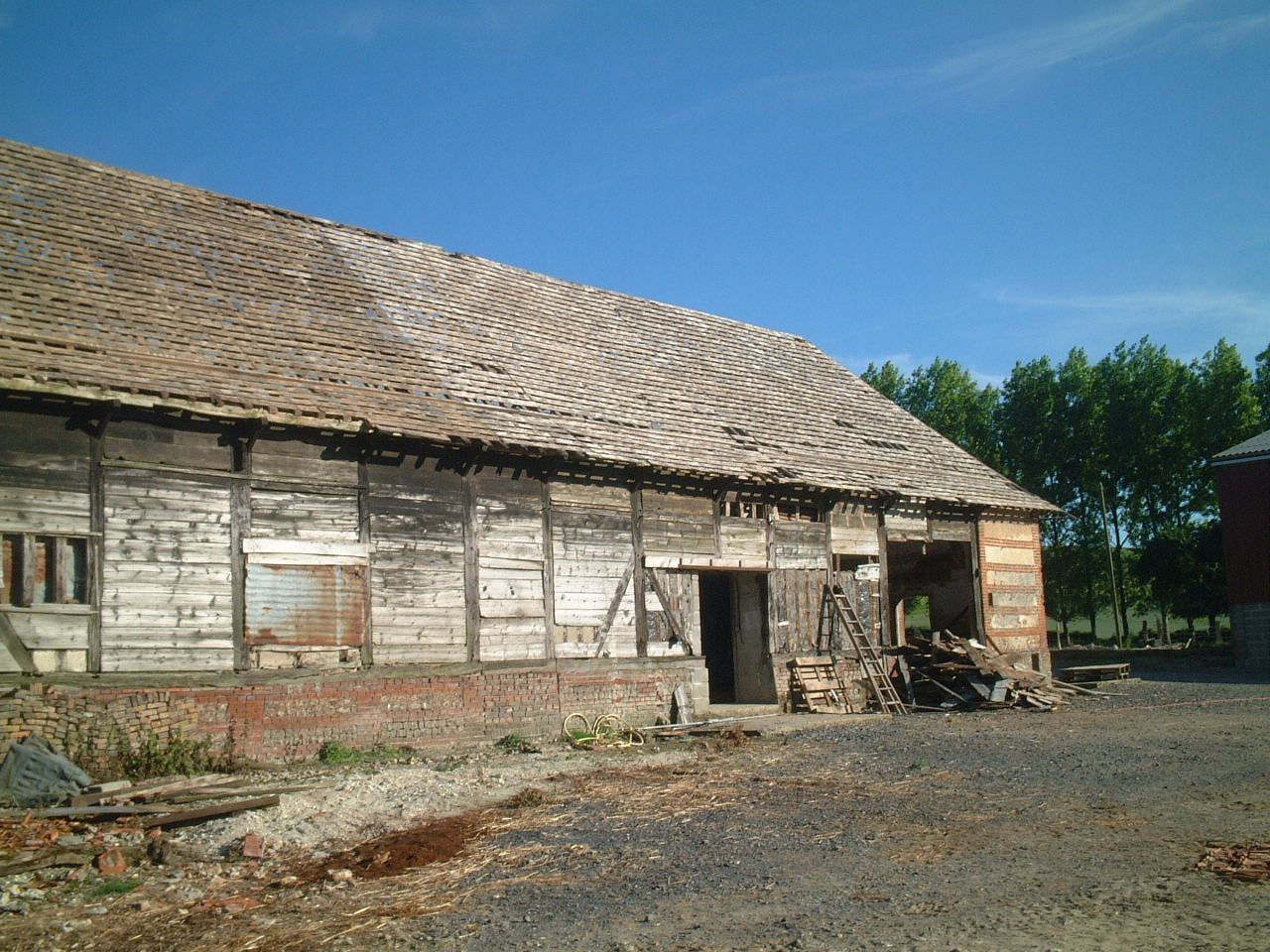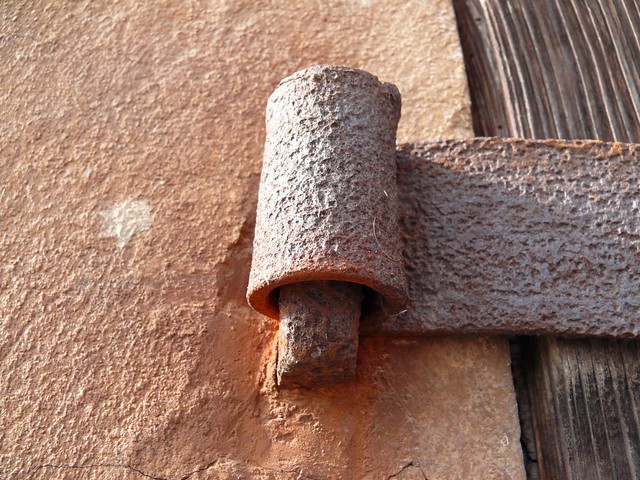I have a few questions about French barns (specifically those in Normandy).
 I have a few pictures but I would like to know a few specifics, if you guys can help.
I have a few pictures but I would like to know a few specifics, if you guys can help. Did the majority of the barn doors have a rectangular shape or did they have a semi-circular shape at the top? What is the interior like? Is the ground covered in dirt, hay/silage, or just planks? Was a lot of wood used (in the construction)or was the majority stone? And back in 1944 what would the roof be covered with (black shingles or red ones)?
Slightly of topic, but what is the most common type of tree in that area?
If you could show me some pictures that would be great!!!
Thanks for your help!
Regards,

































